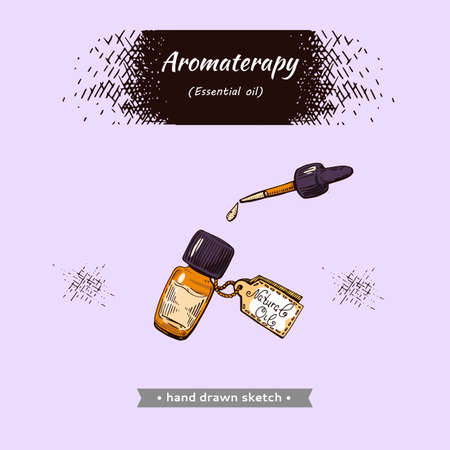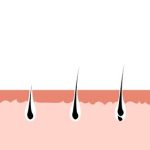1. Understanding the Causes of Thinning Hair
Dealing with thinning hair can be frustrating, but understanding the root causes can help you find the best budget-friendly restoration options. Several factors contribute to hair loss, including genetics, hormonal changes, and lifestyle choices. By identifying the cause of your hair thinning, you can explore effective solutions that fit your needs and budget.
Genetics and Hereditary Hair Loss
One of the most common reasons for thinning hair is genetics. If your parents or grandparents experienced hair loss, there’s a higher chance you might too. This type of hair loss, known as androgenetic alopecia, affects both men and women and usually follows a predictable pattern.
Hormonal Changes and Medical Conditions
Hormonal imbalances can also play a significant role in hair thinning. Conditions such as thyroid disorders, pregnancy, menopause, and polycystic ovary syndrome (PCOS) can trigger hair loss by disrupting the natural growth cycle. If you suspect a medical condition is causing your hair thinning, consulting a healthcare professional may help determine the best course of action.
Lifestyle Factors That Contribute to Hair Thinning
Your daily habits and overall health can impact hair growth. Poor nutrition, high stress levels, excessive heat styling, and harsh chemical treatments can weaken hair follicles and lead to increased shedding. Making small changes to your diet and hair care routine may improve the strength and thickness of your hair over time.
Common Causes of Hair Thinning
| Cause | Description |
|---|---|
| Genetics | Hereditary hair loss passed down from family members. |
| Hormonal Changes | Conditions like pregnancy, menopause, or thyroid disorders affecting hair growth. |
| Poor Nutrition | Lack of essential vitamins and minerals weakening hair follicles. |
| Stress | High stress levels leading to temporary or long-term shedding. |
| Chemical & Heat Damage | Frequent use of harsh treatments weakening the hair shaft. |
2. Over-the-Counter Solutions for Hair Regrowth
If youre dealing with thinning hair and looking for budget-friendly options, over-the-counter (OTC) treatments can be an effective starting point. These solutions are widely available, easy to use, and can help promote hair regrowth without the high costs of clinical treatments.
Minoxidil: A Popular Hair Growth Treatment
Minoxidil is one of the most well-known OTC treatments for hair loss. It is available in liquid or foam form and is applied directly to the scalp. Minoxidil works by improving blood circulation in the scalp, stimulating hair follicles, and prolonging the hair growth phase.
Benefits of Minoxidil:
- FDA-approved for hair regrowth
- Available without a prescription
- Easy to apply at home
- Suitable for both men and women
Potential Downsides:
- Requires consistent use for continued results
- May take several months to show visible improvement
- Some users experience scalp irritation or dryness
Thickening Shampoos and Conditioners
Using thickening shampoos and conditioners is another affordable way to improve the appearance of thinning hair. These products contain ingredients like biotin, caffeine, and keratin, which can strengthen hair strands and create the illusion of fuller hair.
Key Ingredients to Look For:
| Ingredient | Benefit |
|---|---|
| Biotin | Strengthens hair and promotes growth |
| Caffeine | Stimulates hair follicles for better circulation |
| Saw Palmetto | Might help block DHT, a hormone linked to hair loss |
| Aloe Vera | Soothes the scalp and reduces inflammation |
Nutritional Supplements for Hair Health
Your diet plays a crucial role in hair health. Taking supplements that support strong, healthy hair can be an affordable way to prevent further thinning.
Popular Hair Growth Supplements:
- Biotin: Supports keratin production for stronger hair.
- Zinc: Helps maintain scalp health and supports hair follicle function.
- Ironic Acid: Essential for oxygen transport, which benefits hair follicles.
- Saw Palmetto: May help reduce DHT levels linked to hair loss.
- Collagen: Provides essential amino acids that support healthy hair structure.
If youre on a budget but still want to take steps toward healthier, fuller-looking hair, these OTC solutions can be a great place to start. Whether its minoxidil, thickening shampoos, or nutritional supplements, incorporating these into your routine can make a noticeable difference over time.

3. DIY Natural Remedies and Scalp Care
If youre looking for budget-friendly ways to restore thinning hair, natural remedies and proper scalp care can be effective solutions. Many home treatments use affordable ingredients that promote hair growth and improve scalp health without breaking the bank.
Essential Oils for Hair Growth
Essential oils are a popular choice for encouraging hair regrowth naturally. They contain nutrients that nourish the scalp and strengthen hair follicles.
| Essential Oil | Benefits | How to Use |
|---|---|---|
| Rosemary Oil | Stimulates circulation, promotes hair growth | Mix a few drops with a carrier oil and massage into the scalp |
| Lavender Oil | Reduces stress, strengthens hair follicles | Add to shampoo or dilute with coconut oil before applying |
| Peppermint Oil | Cools and invigorates the scalp, improves blood flow | Dilute with jojoba oil and massage onto the scalp for 5-10 minutes |
| Cedarwood Oil | Balances oil production, prevents hair loss | Add to a carrier oil and apply to the scalp before bed |
The Power of Scalp Massages
A simple and free way to improve hair health is through regular scalp massages. Massaging your scalp increases blood circulation, delivering more nutrients to hair follicles and promoting growth.
How to Perform a Scalp Massage:
- Use your fingertips: Gently press in circular motions across your entire scalp.
- Add essential oils: Enhance the benefits by using rosemary or peppermint oil mixed with a carrier oil.
- Meditate while massaging: Reduce stress levels, which can contribute to hair thinning.
- Aim for consistency: Perform for at least 5 minutes daily for noticeable results.
The Role of Diet in Hair Health
Your diet plays a crucial role in maintaining strong, healthy hair. Nutrient deficiencies can lead to thinning strands, so its important to consume foods rich in vitamins and minerals that support hair growth.
Nutrients Essential for Hair Growth:
- Protein: Found in eggs, lean meats, beans, and nuts; strengthens hair structure.
- Biotin (Vitamin B7): Supports keratin production; found in eggs, almonds, and sweet potatoes.
- Iron: Helps deliver oxygen to hair follicles; sources include spinach, red meat, and lentils.
- Omega-3 Fatty Acids: Nourishes hair follicles; found in salmon, flaxseeds, and walnuts.
- Vitamin D: Encourages new follicle growth; get it from sunlight exposure or fortified foods.
Avoiding Harmful Hair Habits
Certain everyday habits can contribute to thinning hair. Making small adjustments can help prevent further damage.
Tips for Healthier Hair Habits:
- Avoid excessive heat styling: High temperatures weaken hair strands over time.
- Lessen harsh chemical treatments: Bleaching or perming can cause breakage and thinning.
- Select gentle shampoos: Avoid sulfates and opt for nourishing formulas instead.
- Avoid tight hairstyles: Constant tension on the scalp may lead to traction alopecia (hair loss caused by pulling).
- Satin pillowcases help: Reduce friction compared to cotton pillowcases, preventing breakage.
Taking care of your scalp with natural remedies and proper nutrition can go a long way in improving hair health without spending a fortune. Simple changes like using essential oils, eating nutrient-rich foods, and performing regular scalp massages can make a big difference over time.
4. Non-Surgical Professional Treatments on a Budget
If youre looking for effective hair restoration without undergoing surgery, several budget-friendly professional treatments can help stimulate hair growth. Options like PRP therapy, low-level laser therapy, and micro-needling offer promising results at a fraction of the cost of hair transplants.
PRP Therapy
Platelet-Rich Plasma (PRP) therapy is a popular non-surgical treatment that uses your own blood to promote hair growth. A small amount of blood is drawn, processed to concentrate the platelets, and then injected into the scalp.
Benefits of PRP Therapy:
- Stimulates natural hair growth
- Minimally invasive with little downtime
- Uses your body’s own healing properties
Estimated Cost:
| Treatment Type | Cost Per Session | Recommended Sessions |
|---|---|---|
| PRP Therapy | $500 – $1,500 | 3 – 6 sessions |
Low-Level Laser Therapy (LLLT)
This FDA-approved treatment uses red light therapy to stimulate hair follicles and encourage growth. It can be done professionally at a clinic or at home with laser caps or combs.
Benefits of LLLT:
- Painless and non-invasive
- No downtime required
- Can be used at home for convenience
Estimated Cost:
| Treatment Type | Cost Range |
|---|---|
| In-Clinic LLLT | $50 – $300 per session |
| At-Home Devices | $200 – $1,000 (one-time purchase) |
Micro-Needling for Hair Growth
This procedure involves using tiny needles to create micro-injuries in the scalp, which stimulates collagen production and enhances the absorption of hair growth serums.
Benefits of Micro-Needling:
- Boosts scalp circulation and collagen production
- Aids absorption of topical treatments like minoxidil
- A more affordable alternative to surgical procedures
Estimated Cost:
| Treatment Type | Cost Per Session | Recommended Sessions |
|---|---|---|
| Professional Micro-Needling | $200 – $700 | 3 – 6 sessions |
| At-Home Derma Roller | $20 – $100 (one-time purchase) |
If youre dealing with thinning hair and seeking non-surgical solutions, these treatments provide effective and affordable options. Whether you opt for PRP therapy, LLLT, or micro-needling, choosing a method that fits your budget and lifestyle can help you regain confidence with healthier, fuller hair.
5. Affordable Hairstyling Tips to Conceal Thinning Hair
Dealing with thinning hair can be frustrating, but the right hairstyle and styling techniques can make a big difference. You don’t have to spend a fortune to achieve a fuller look—budget-friendly options are available to help you style your hair effectively. Below are some expert tips on affordable hairstyling methods that create the illusion of thicker, more voluminous hair.
Best Budget-Friendly Haircuts for Thinning Hair
The right haircut can add volume and make thinning less noticeable. Consider these cost-effective styles:
| Haircut Style | Description |
|---|---|
| Layered Cut | Adds texture and volume, making hair appear fuller. |
| Pixie Cut | A short, stylish option that minimizes the appearance of thin strands. |
| Bobs with Texture | A chin-length bob with layers adds body and movement. |
| Side-Swept Bangs | Covers thinning areas near the forehead while adding dimension. |
Simple Styling Techniques for Fuller-Looking Hair
You don’t need expensive treatments to enhance your hair’s volume. Try these easy and budget-friendly styling methods:
1. Blow-Dry Upside Down
This simple trick lifts the roots and adds instant volume without requiring salon visits.
2. Use Volumizing Products Wisely
Avoid heavy creams or gels; instead, opt for lightweight mousses or volumizing sprays that won’t weigh down your hair.
3. Change Your Parting
A deep side part or zigzag parting can create the illusion of fuller hair by covering sparse areas.
4. Tease Strategically
A little backcombing at the crown can add height and fullness without damaging your hair.
The Magic of Hair Fibers for Instant Fullness
If you need a quick fix for thinning spots, hair fibers are an affordable option. These tiny fibers attach to existing strands, creating a thicker appearance in seconds. Available in various shades, they blend seamlessly with natural hair and wash out easily.
Ditch Expensive Salon Treatments—Try These DIY Hacks Instead!
- Aloe Vera Gel: A natural way to add texture and thickness without chemicals.
- Diluted Apple Cider Vinegar Rinse: Removes buildup that weighs down thin strands.
- Satin Pillowcases: Reduce friction and breakage while keeping your hair looking fuller.
You don’t have to break the bank to manage thinning hair effectively. By choosing the right haircut, using smart styling techniques, and incorporating affordable solutions like hair fibers, you can achieve a voluminous look without spending a fortune.


